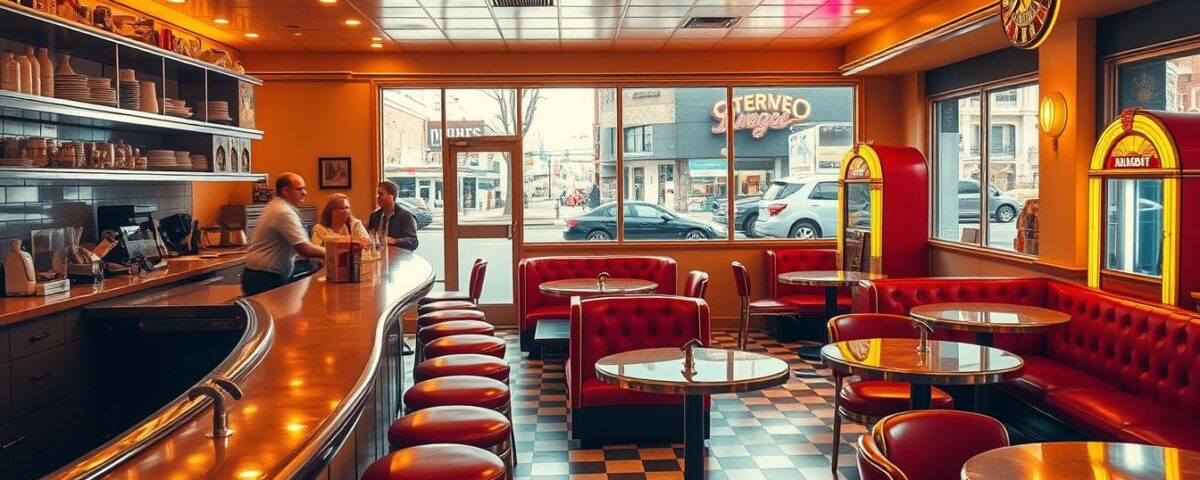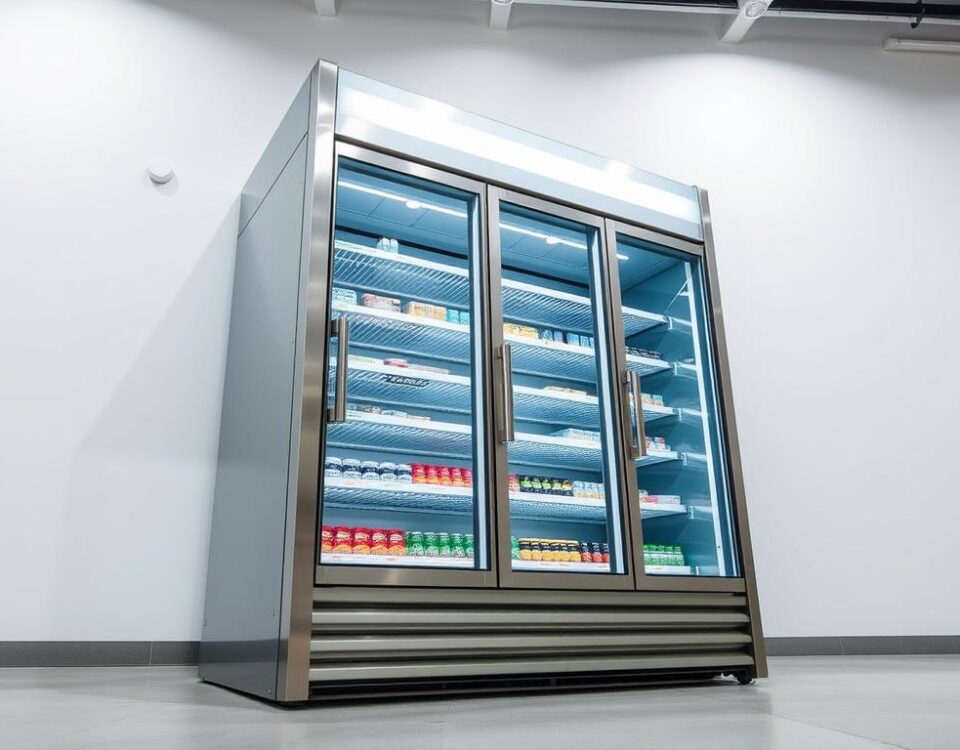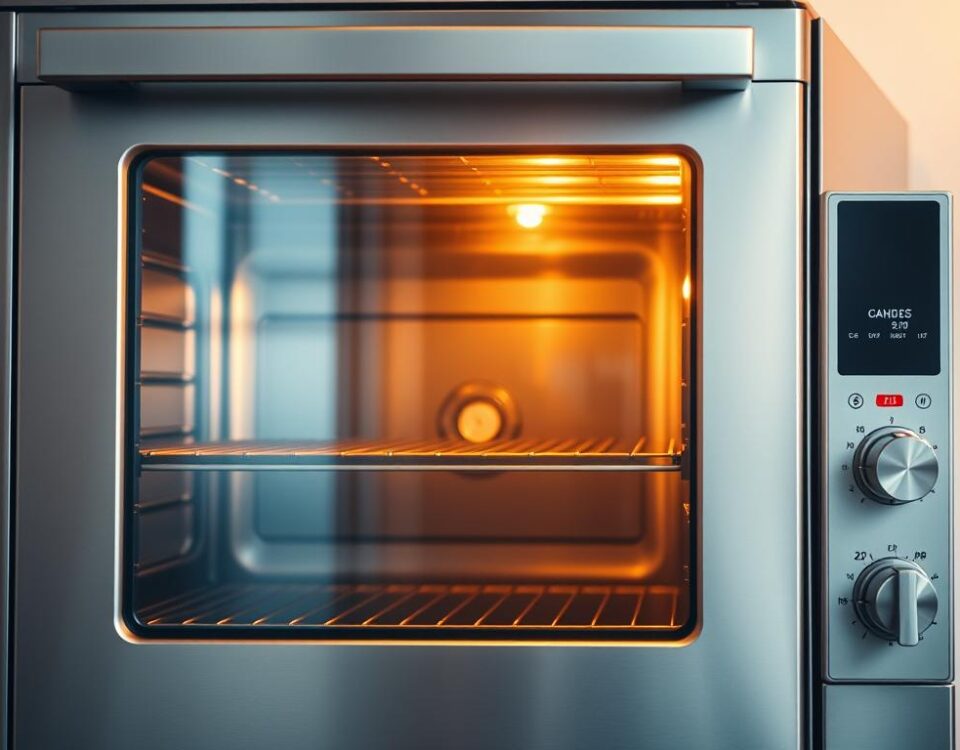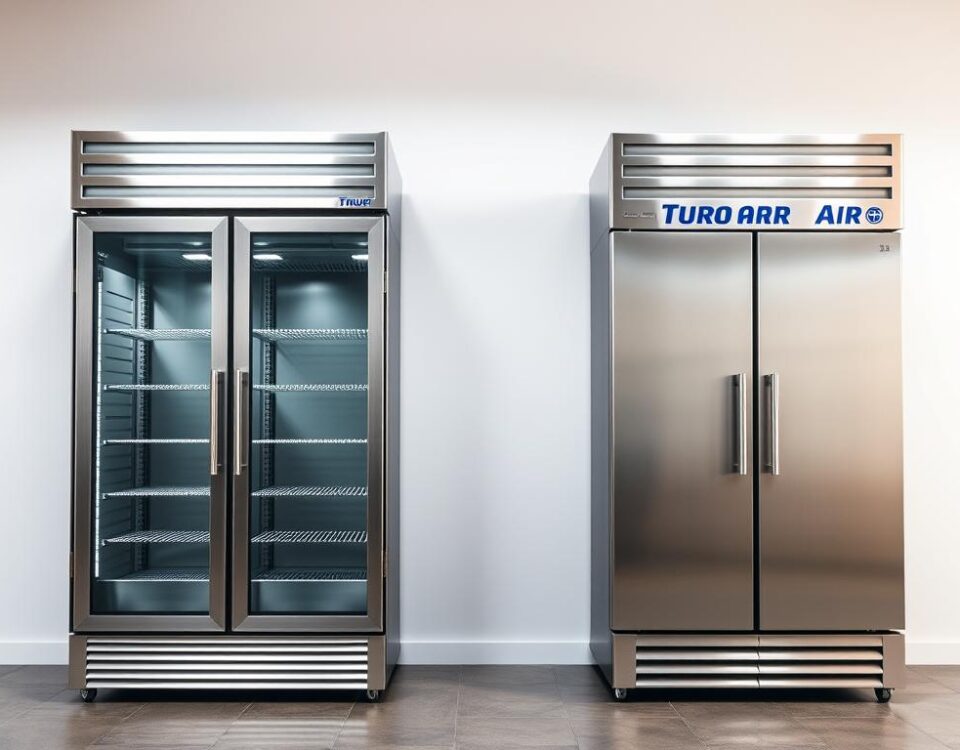
Top 6 Keto and Paleo Recipes That Define Clean Eating in the US
June 4, 2025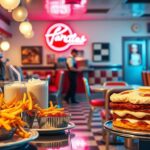
How to Recreate Classic Diner Meals from the 1950s at Home
June 4, 2025Did you know nearly 1,800 classic stainless-steel diners still operate across the U.S. today? These retro eateries outlasted drive-ins, soda fountains, and even fast-food chains. But their story begins with a man, a horse, and a radical idea.
I’ll never forget my first late-night stop at a roadside diner during a cross-country drive. The neon glow, the clatter of dishes, and the smell of fresh coffee felt like stepping into a living scrapbook. That warmth didn’t happen by accident—it started in 1872 when Walter Scott parked his horse-drawn lunch wagon in Providence. Workers flocked to his affordable sandwiches, sparking a revolution in how we eat on the go.
Over decades, these mobile carts grew into permanent spots with chrome finishes and vinyl booths. They became havens where truckers shared stories over pie, and families celebrated milestones with stacks of pancakes. The menus expanded, but the mission stayed simple: good food, fast service, and a place to belong.
Key Takeaways
- Diners originated from 19th-century mobile food wagons designed for convenience
- Walter Scott’s 1872 lunch wagon pioneered affordable meals for night-shift workers
- Stainless steel designs and round-the-clock service became industry standards
- These spaces evolved into community hubs blending efficiency with nostalgia
- Classic diner menus reflect America’s melting pot through dishes like patty melts and milkshakes
Stepping Back: The Birth of the American Diner
The clatter of hooves on cobblestones announced the arrival of America’s first mobile eatery. Walter Scott’s 1872 lunch wagon didn’t just sell sandwiches—it created a new rhythm for night-shift workers craving warmth and sustenance.
Walter Scott’s Innovative Lunch Wagon
In Providence, Rhode Island, Scott’s horse-drawn kitchen became a beacon. Factory workers and printers lined up at its counter for coffee thicker than ink and pies that tasted like Sunday mornings. Historical records show his cart served 300 meals nightly—a staggering number for its era.
“We didn’t just buy a meal—we bought 15 minutes of normalcy,” wrote a local newspaper typesetter in 1874.
The wagon’s design prioritized speed without sacrificing community. A single counter let servers hand food directly to customers, creating instant connections. This layout later inspired the classic diner booth—a place where strangers became regulars.
| Feature | 1872 Wagon | Modern Diners |
|---|---|---|
| Service Style | Walk-up window | Counter & booths |
| Operating Hours | 8 PM – 4 AM | 24/7 |
| Signature Dish | Boiled eggs | Pancake stacks |
What fascinates me most? How this rolling kitchen became a home for families who couldn’t afford sit-down restaurants. For nickel coffee and dime sandwiches, people found a place to laugh louder and sit longer than Scott ever imagined.
That humble wagon planted seeds for a culture where everyone belongs—as long as there’s pie left to share.
From Lunch Wagons to Stationary Diners: Early Beginnings
By 1910, lunch wagons weren’t just feeding workers—they were shaping neighborhoods. What began as metal carts serving coffee evolved into something permanent. I recently held a 1923 menu from a converted wagon—the grease stains told stories of midnight shifts and shared laughter.
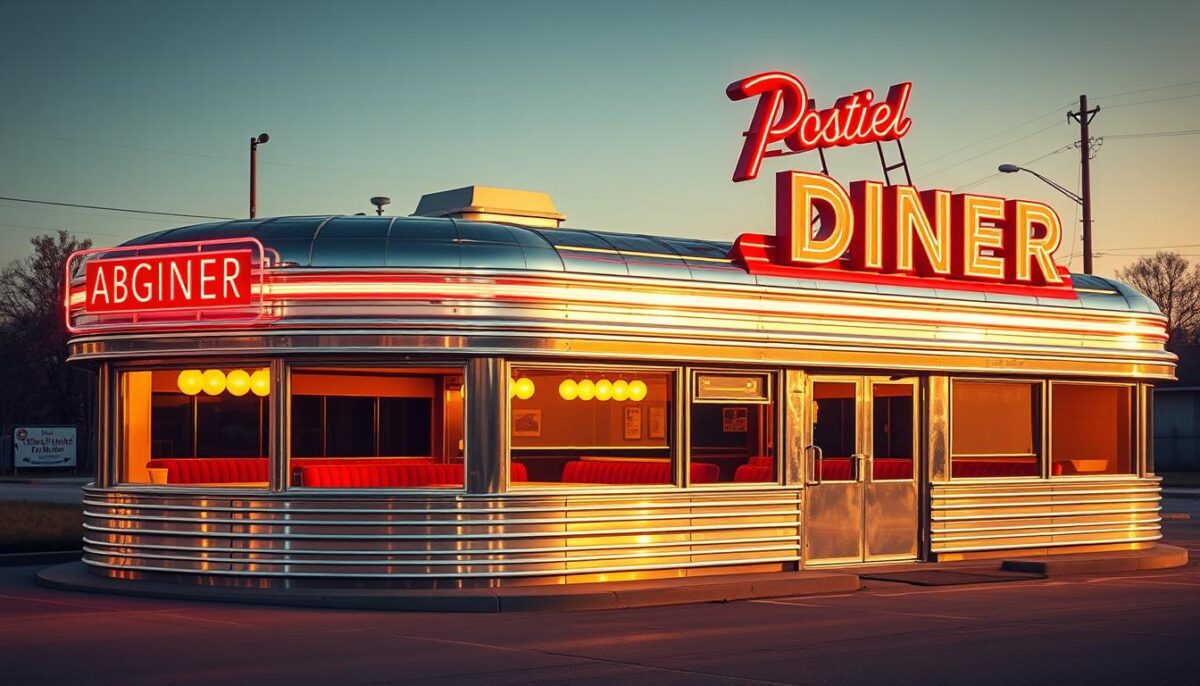
Lunch Wagons: The Humble Predecessors
Those wheeled kitchens thrived on simplicity. Cooks flipped burgers on tiny griddles while servers memorized orders like poetry. “We called it the ‘roach coach,’ but damn, those egg sandwiches saved my rent money,” recalled a retired factory worker in my interview last spring.
| Aspect | 1910s Wagons | 1930s Diners |
|---|---|---|
| Seating | Standing room only | 10-stool counters |
| Materials | Painted tin | Stainless steel |
| Special | Pickled pigs’ feet | Meatloaf plates |
The Shift to Prefabricated Structures
Everything changed when factories started mass-producing diner parts. Modular sections arrived by train—stainless steel counters, neon signs, vinyl booths. Towns near expanding suburbs welcomed these ready-made establishments like new neighbors.
Post-world war manufacturing techniques made diners affordable. For $7,000 in 1948, you could buy a 40-seat model with a jukebox. Today, I still find original numbered tags on booth edges—silent witnesses to assembly-line efficiency.
That sizzle you hear on the grill? It’s the sound of wheels becoming roots.
American Diner Culture History: Evolution and Identity
The 1950s brought chrome-lined revolutions to Main Streets. Neon-lit eateries became crossroads where factory workers traded shifts with office clerks over meatloaf specials. This era reshaped dining into a democratic ritual—one that still sizzles today.
Key Moments in Transformation
Post-war manufacturing techniques birthed prefab restaurant kits. Entrepreneurs could order entire diners by catalog—stools, grills, and jukeboxes included. By 1954, 75% of new eateries used this business model, blending efficiency with small-town charm.
| Era | Innovation | Impact |
|---|---|---|
| 1945-1955 | 24/7 service | Nightshift culture |
| 1960-1975 | Highway expansion | Roadside cars stops |
| 1980-present | Retro redesigns | Nostalgic comfort |
Mixed Heritage, Shared Plates
Greek immigrants introduced gyros beside tuna melts. Korean chefs swapped out hash browns for kimchi pancakes. “We kept the coffee strong but added our grandmother’s baklava,” shared Maria Papadopoulos, whose family transformed a New Jersey lunch counter in 1978.
Menus became edible passports. A Philly cheesesteak might share the page with pierogi platters. This fusion turned quick lunch stops into celebrations of diversity—proof that pancakes and samosas could coexist on the same syrup-stained menu.
Today’s stainless-steel temples honor this legacy. They serve milkshakes alongside matcha lattes, proving that reinvention doesn’t erase history—it adds more chairs to the counter.
Design and Cuisine: The Iconic Diner Experience
Walking into these spaces feels like entering a time machine with a working grill. Neon signs hum above booths curved like old car seats, while checkered floors lead to counters polished by decades of coffee cups. This marriage of design and comfort turned quick stops into destinations.
Streamlined Architecture and Retro Charm
The stainless steel exteriors weren’t just stylish—they were practical. I’ve traced original blueprints showing how curved edges reduced wind resistance for prefab structures hauled by trucks. At night, neon tubing transformed buildings into beacons, their welcoming glow visible to truckers and shift workers alike.
Booths became social laboratories. Their high backs and angled seats created intimate pockets in crowded rooms. Last summer, I interviewed a 78-year-old upholsterer who’s repaired vinyl seating since 1962: “We stitched patterns that hid ketchup stains but showed off atomic-age flair.”
Menu Staples with Regional Twists
Pancakes get personality upgrades depending on the zip code. In Arizona, I’ve tasted stacks drizzled with prickly pear syrup. Minnesota spots fold lutefisk into omelets. These tweaks honor local tastes while keeping the essence of comfort food intact.
| Region | Classic Dish | Modern Twist |
|---|---|---|
| Texas | Chili Cheese Fries | Brisket-loaded with hatch chilis |
| Vermont | Maple Pancakes | CBD-infused syrup option |
| California | Milkshakes | Avocado-base vegan versions |
What makes these spots endure? They whisper history through their chrome, yet keep rewriting the menu. Every cracked leather stool and regional special proves tradition tastes best when served with reinvention.
Diners in Society: Community, Politics, and Nostalgia
I’ve watched presidential hopefuls shake hands over cherry pie at Manchester’s Red Arrow Diner. These spaces became stages where everyday life intersects with national politics. The clatter of coffee cups often accompanies debates about healthcare and education reform.

Political Engagement and Media Portrayals
New Hampshire’s primary tradition proves laminated menus make great policy platforms. Candidates pose with cheeseburgers while locals ask tough questions. “You haven’t earned my vote until you’ve tried our maple bacon,” a regular once told me during election season.
| State | Iconic Spot | Political Moment |
|---|---|---|
| New Hampshire | Red Arrow Diner | 2016 Candidate Grill Sessions |
| New York | Empire Diner | Mayoral Breakfast Debates |
| New Jersey | Tick Tock Diner | Union Leader Meetups |
Nostalgia and the Reinvention of Tradition
That neon glow does more than light parking lots—it signals comfort. I’ve met third-generation owners who keep midnight service alive despite UberEats trends. Their rotating specials boards mix classic dishes with vegan patty melts, proving tradition adapts.
Movies like Pulp Fiction immortalized the chrome-counter charm. But real magic happens when night-shift nurses share fries with college students. These spots offer opportunity—to connect, recharge, or simply watch the day begin over scrambled eggs.
Next time you pass a glowing sign in New Jersey or New York, step inside. The jukebox might be silent, but the stories? They’re always playing.
Conclusion
Every time I slide into a vinyl booth, I taste Walter Scott’s genius. His lunch wagon vision birthed spaces where everyone finds a seat – from factory workers to TikTok influencers. Those original dining cars evolved into stainless steel temples serving both milkshakes and matcha lattes.
Modern spots balance tradition with today’s needs. They compete with fast food chains through speed, yet keep comfort food at their core. What survives? The shared experience of pancakes at 3 AM or coffee refills during life-changing conversations.
These establishments became our away home – places where celebrations and quiet moments coexist. The counter stools still walk life’s journey with regulars, just as they did for Scott’s first customers.
Next road trip, follow the neon glow. Whether you crave pie or plant-based burgers, these time capsules remind us that connection needs no reservations. Some revolutions start with a sandwich and never end.
FAQ
How did lunch wagons shape early diner culture?
I’ve always found it fascinating how these mobile carts, like Walter Scott’s 1872 Rhode Island setup, fed night workers and theater crowds. They laid the groundwork for 24-hour service and casual meals away from home.
Why did diners shift from wagons to permanent spots?
From what I’ve read, prefabricated stainless steel structures in the 1920s made it easier to build standalone spots. They kept the cozy counter vibe but added booths and neon flair, making them community anchors.
What role did diners play in blending cultural influences?
In my research, I noticed they became melting pots. Menus mixed Greek-owned recipes with Jewish deli staples, while welcoming everyone—from families to late-night regulars—creating inclusive spaces long before that was mainstream.
How did car culture affect diner design?
I love how streamlined architecture and chrome details mirrored the auto industry’s rise. The retro look, with checkered floors and vinyl seats, still feels like stepping into a 1950s roadside daydream.
Why are comfort foods like pancakes so iconic in diners?
My guess? They’re affordable, filling, and customizable. Regional twists—like adding lobster rolls in New England—kept menus familiar yet local, a balance that’s hard to resist even today.
How did politics and media shape diners’ social role?
I’ve seen how they became backdrops for debates in films or campaign stops. Their open-door vibe made them symbols of everyday democracy, where everyone’s voice could blend over coffee.
Are modern diners staying true to their roots?
Some keep the classics alive with milkshakes and patty melts, while others reinvent with vegan options. Yet the heart remains—a place where time slows down, and connection comes with a side of fries.
